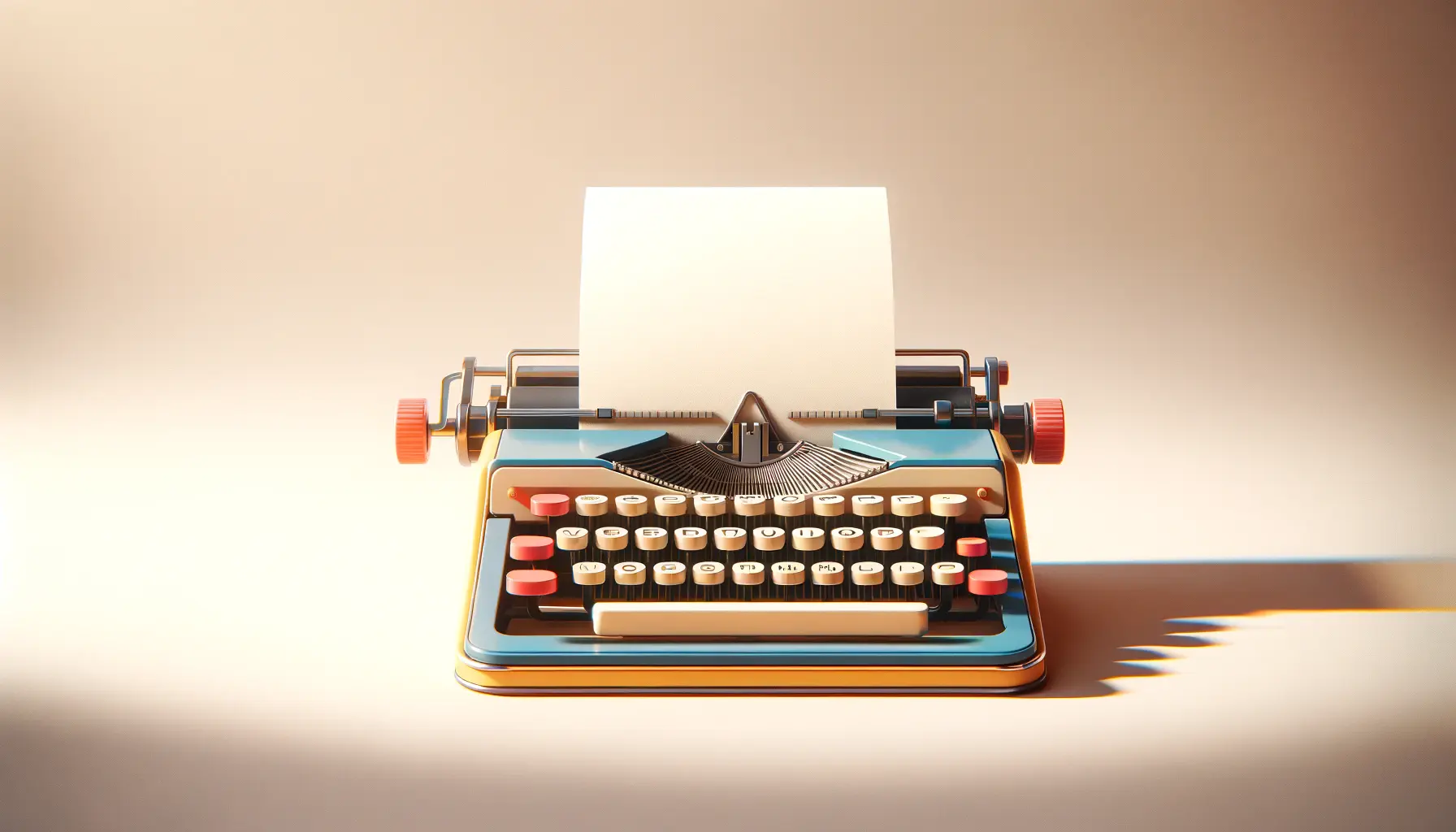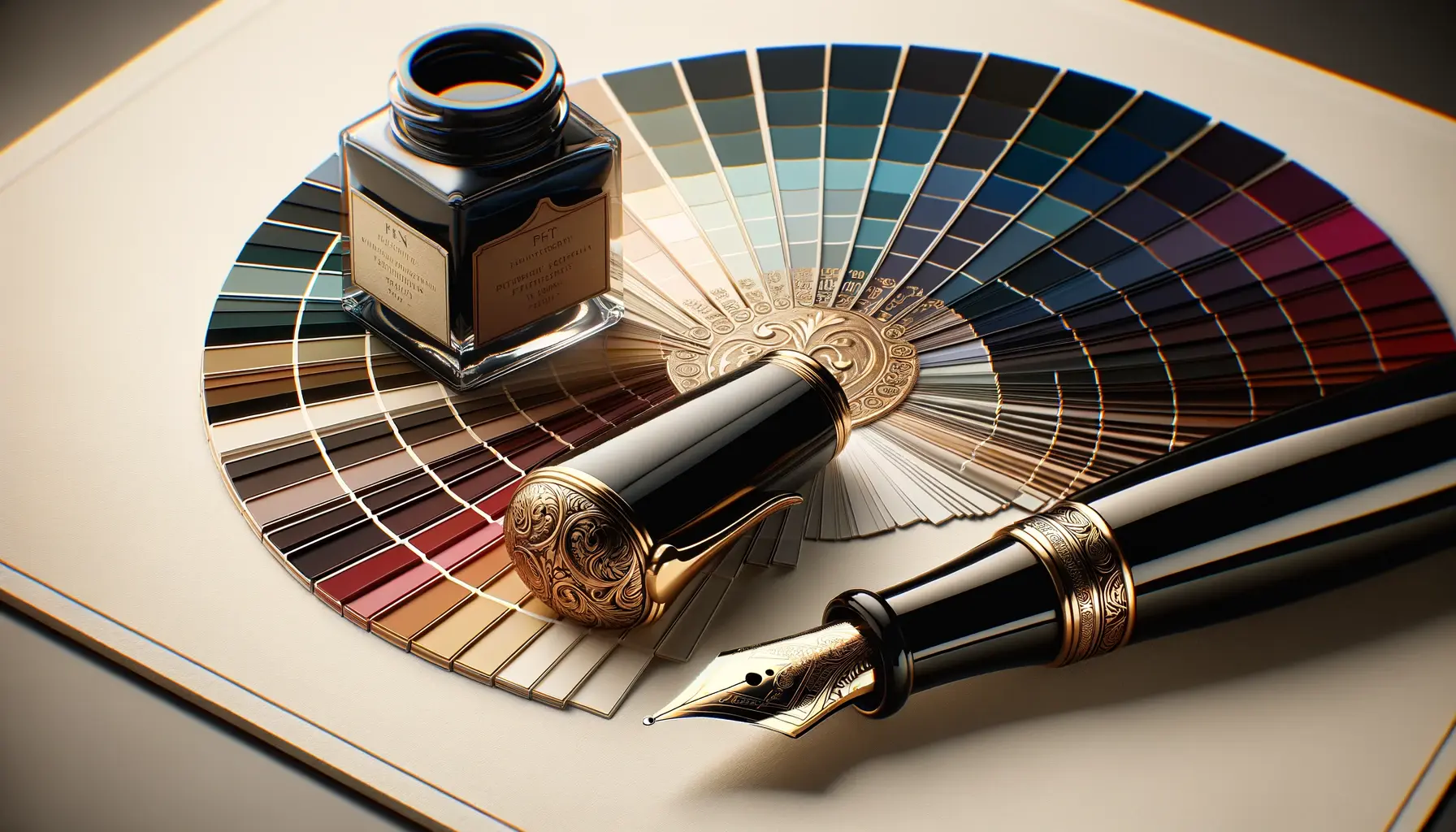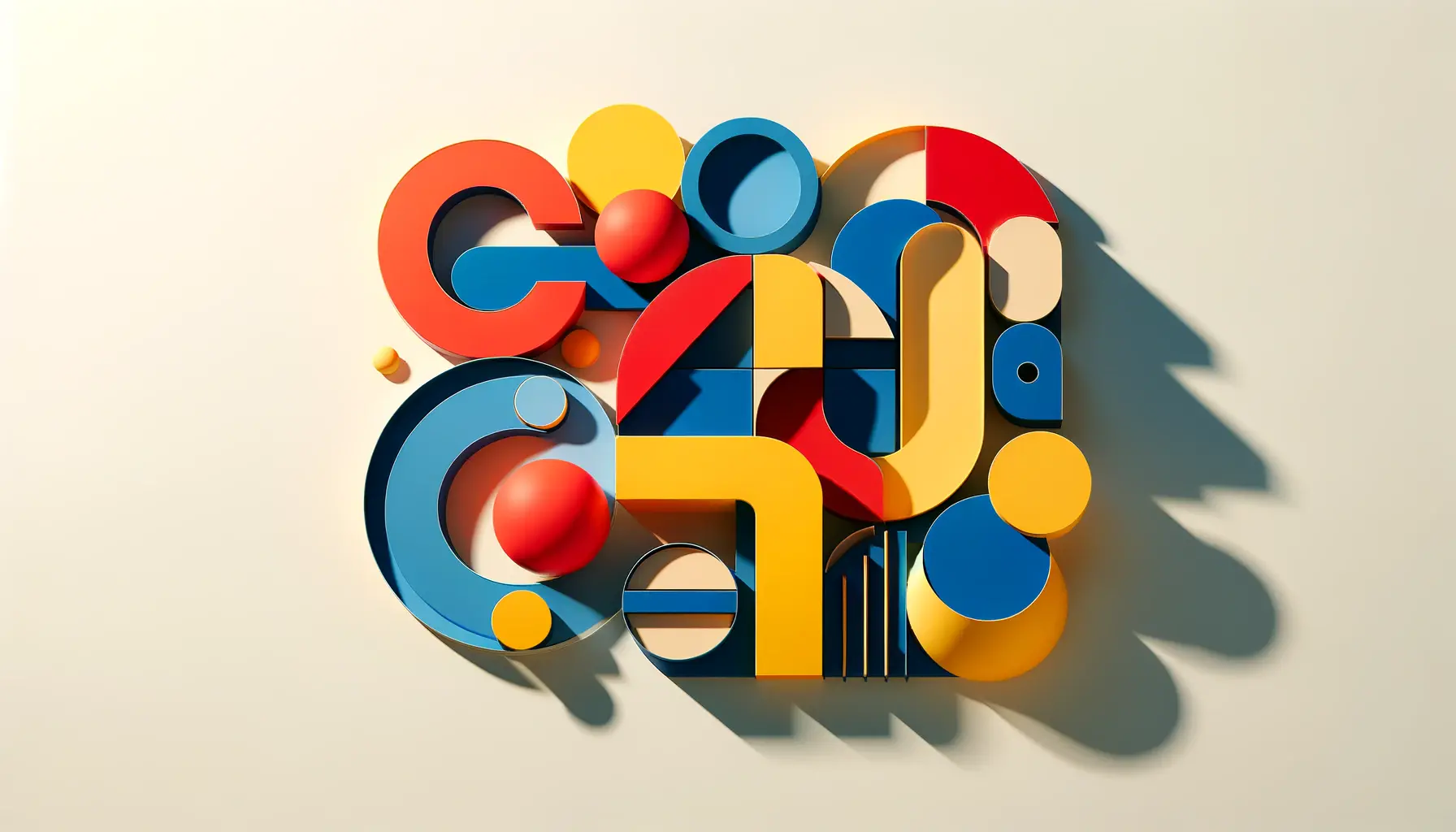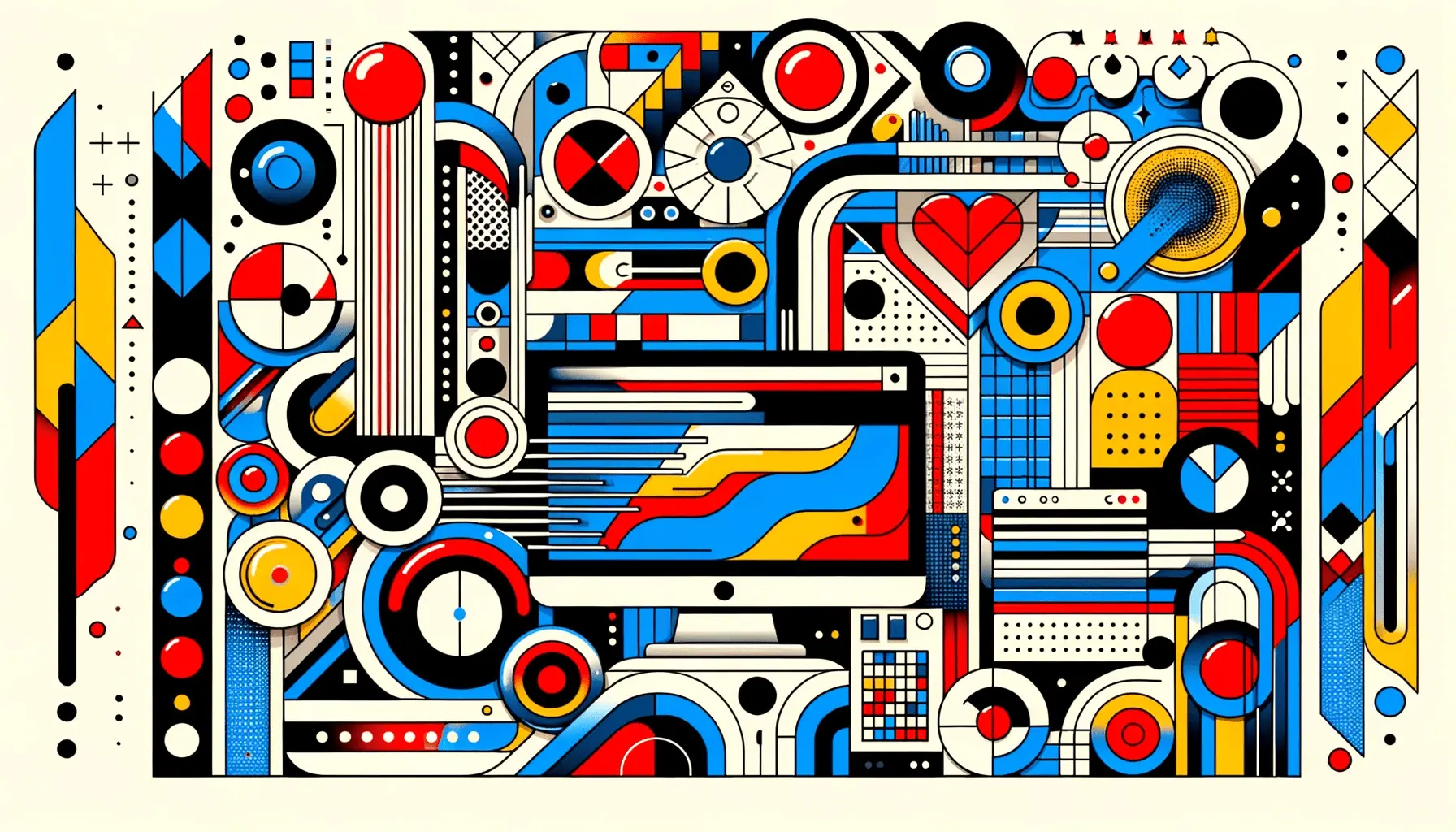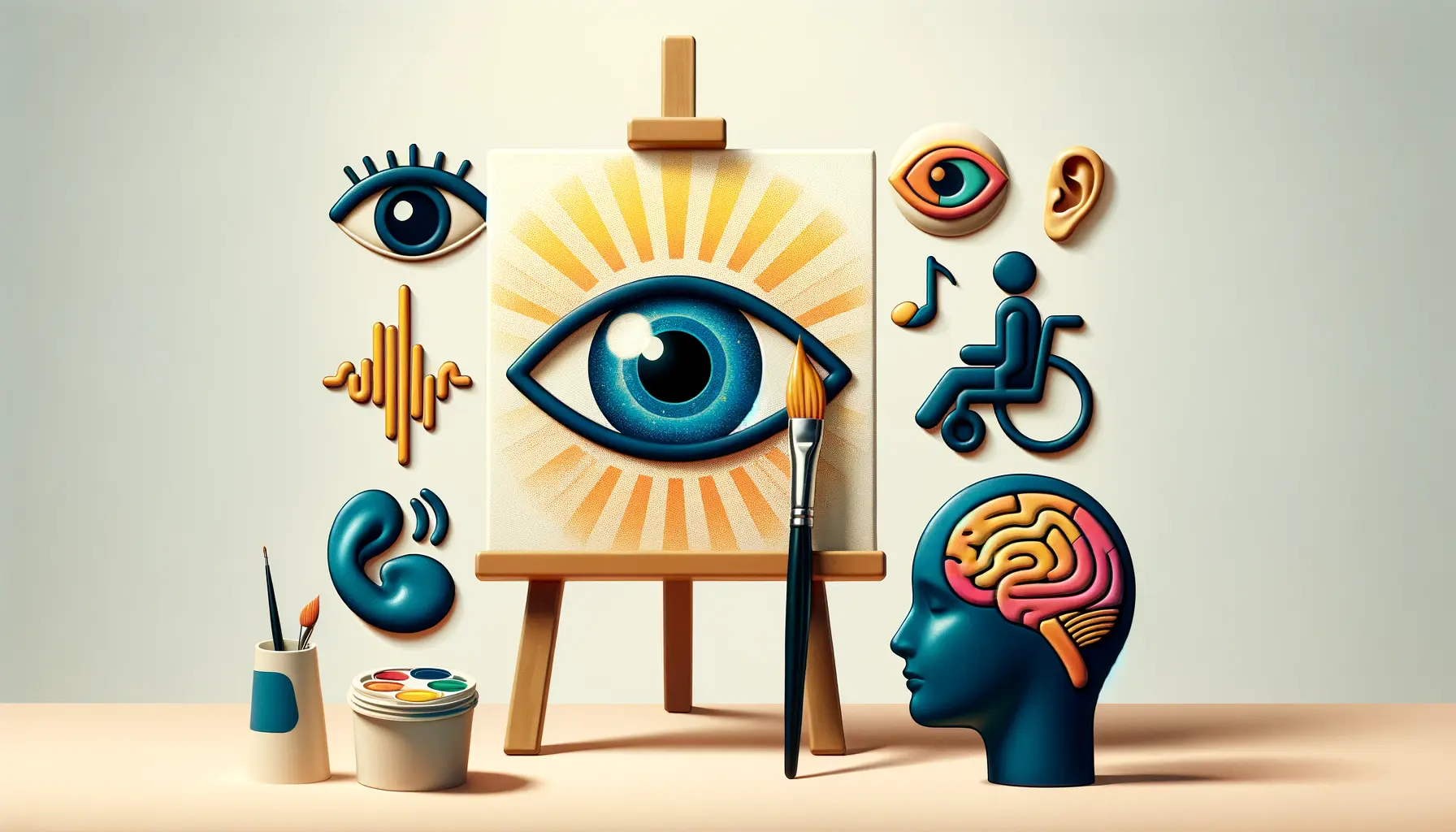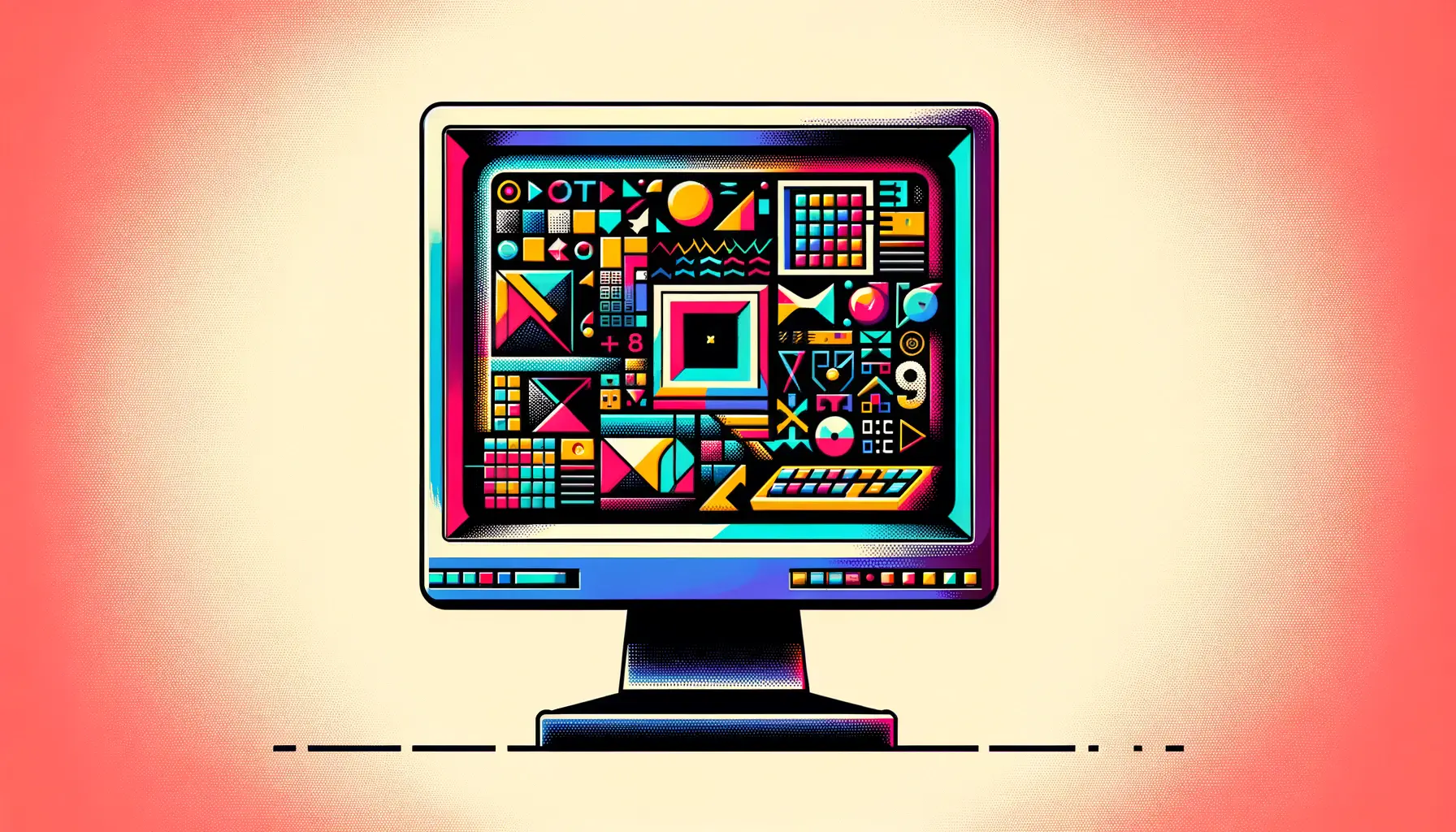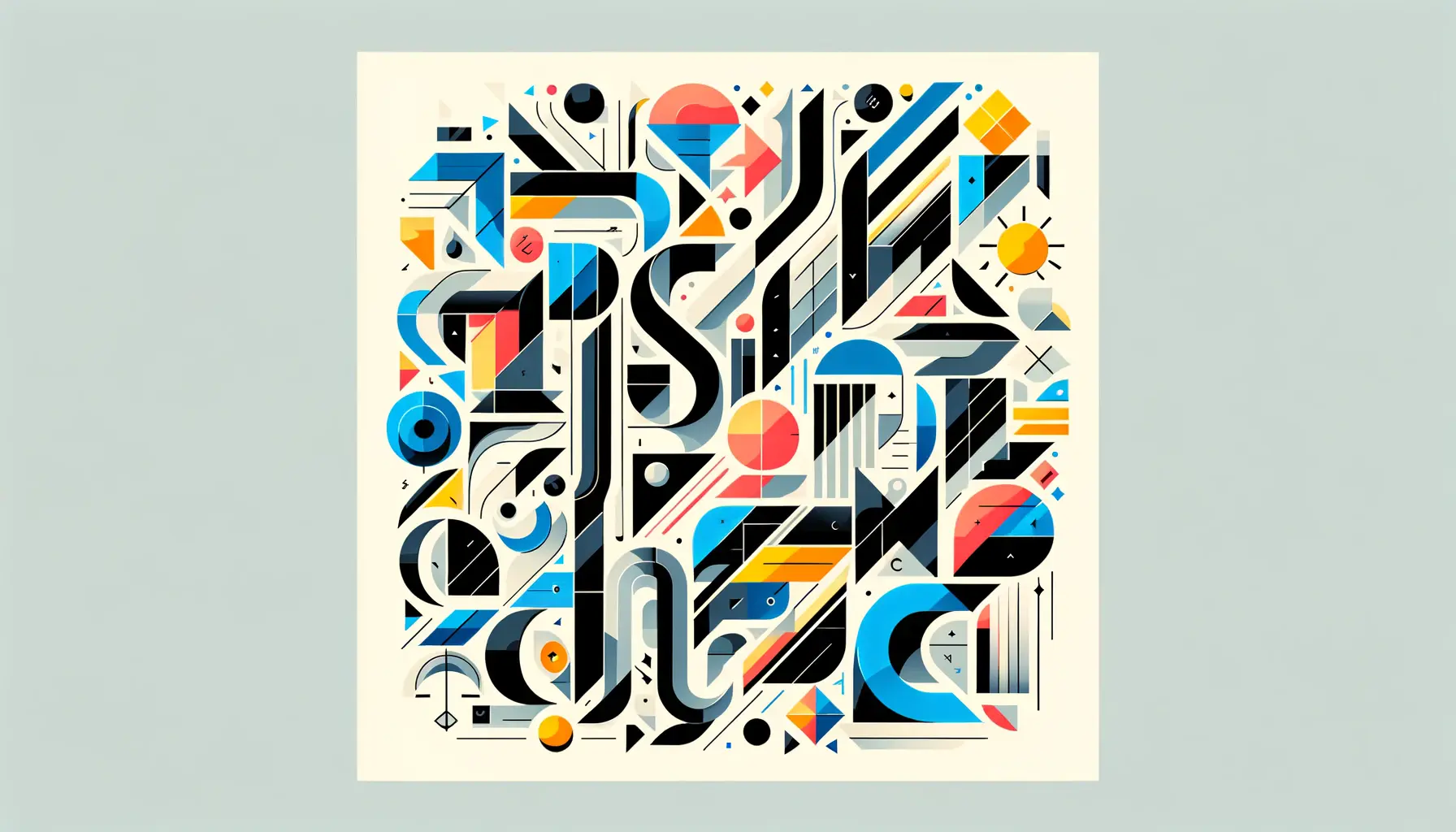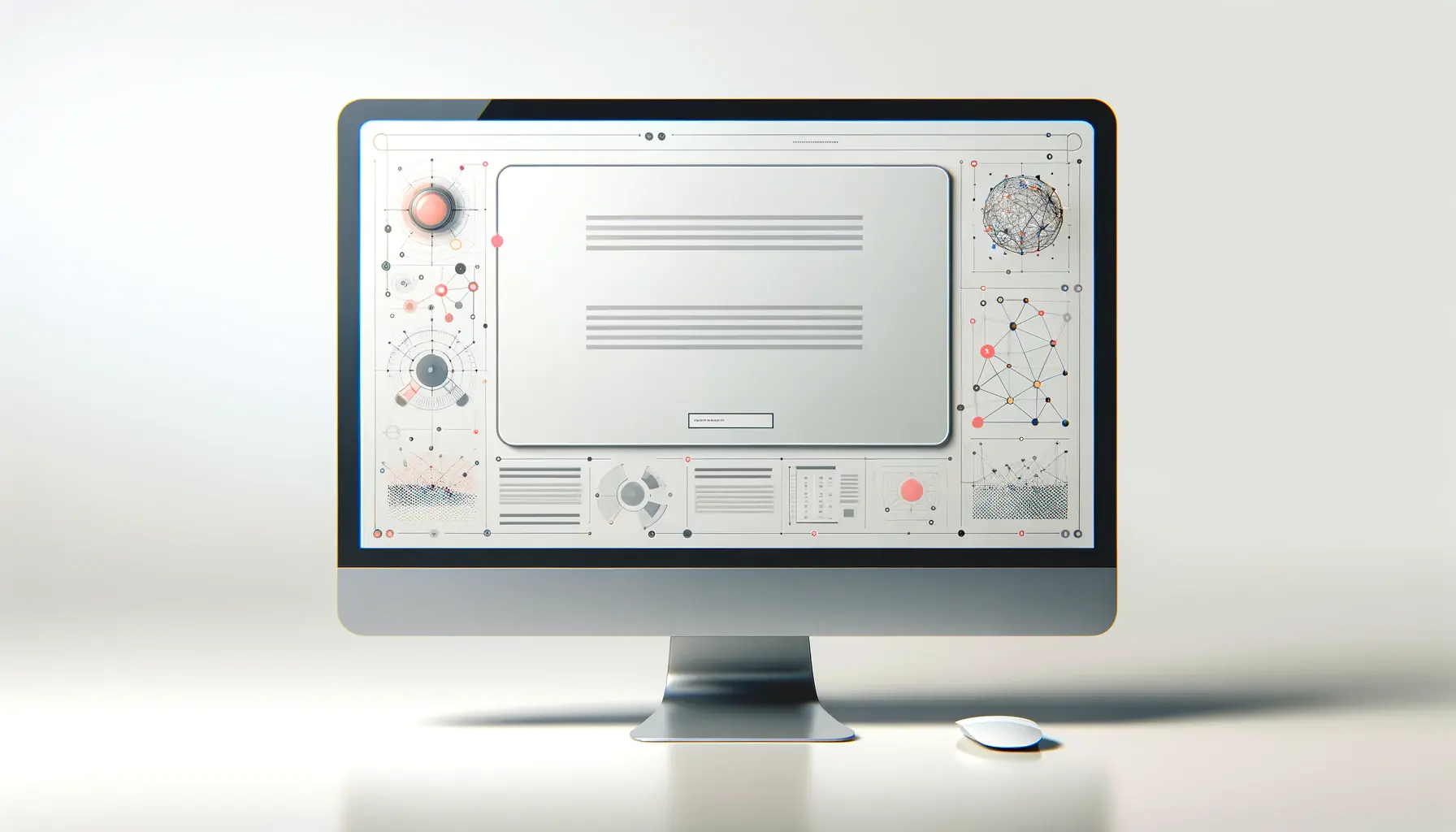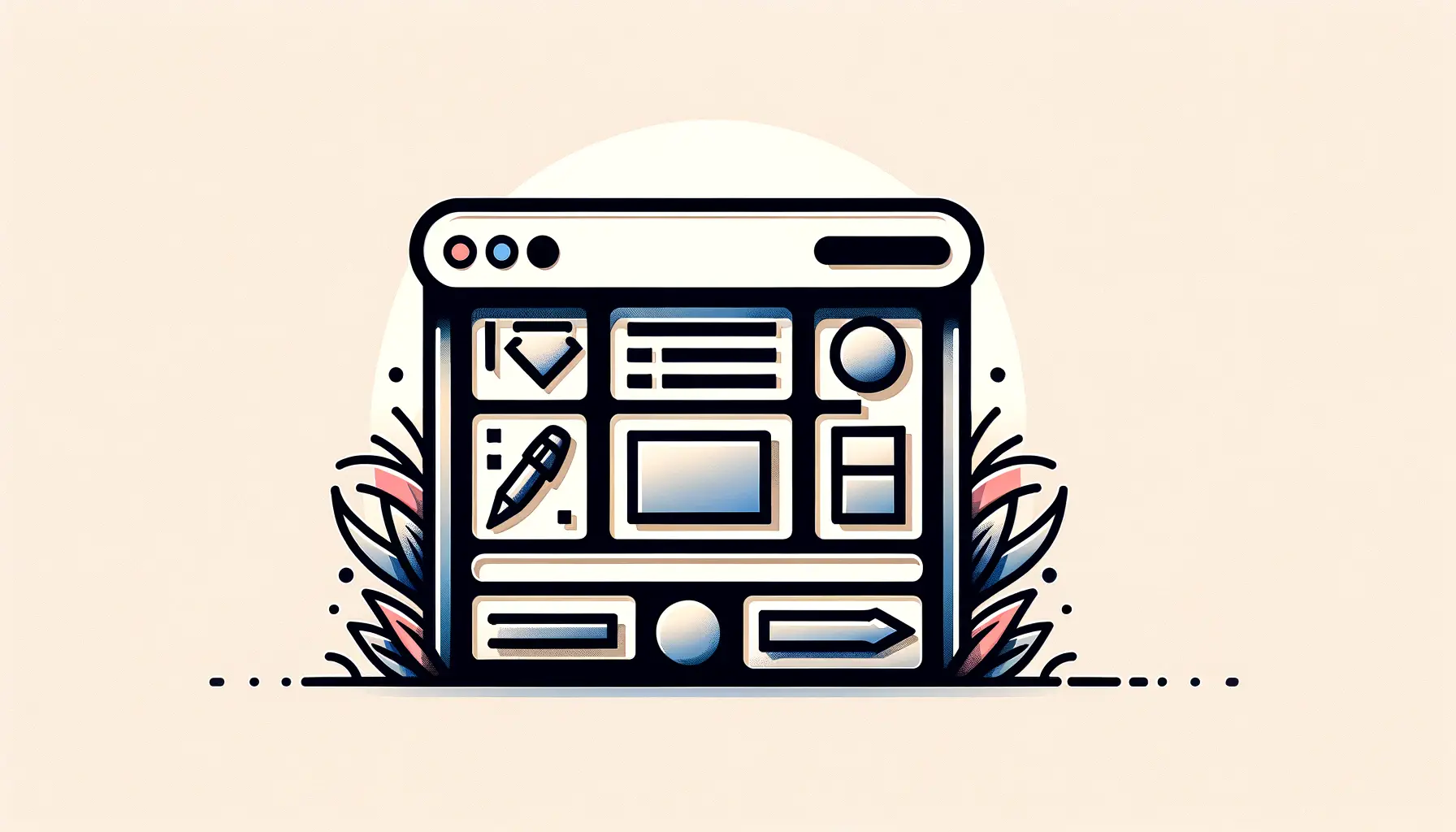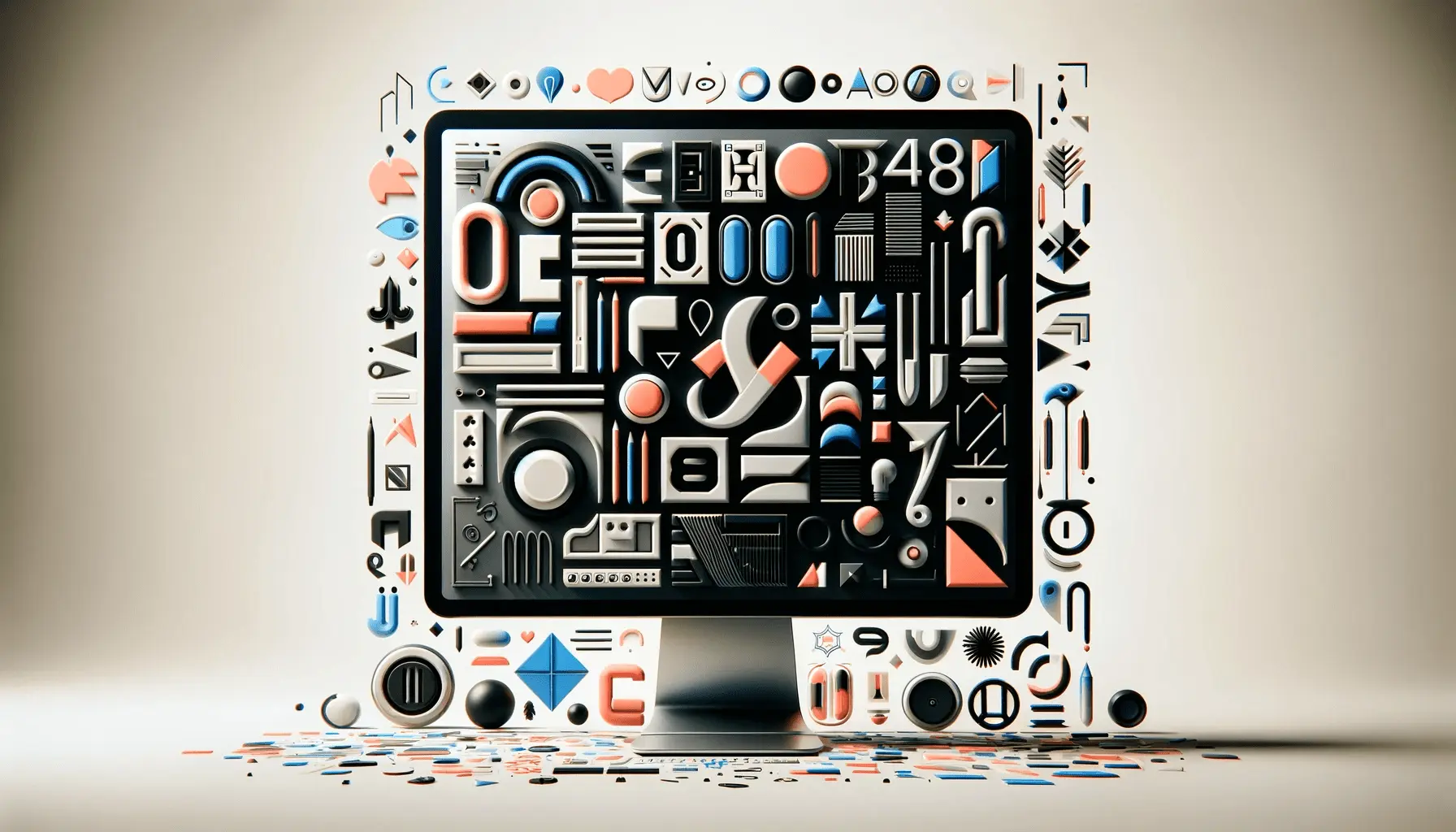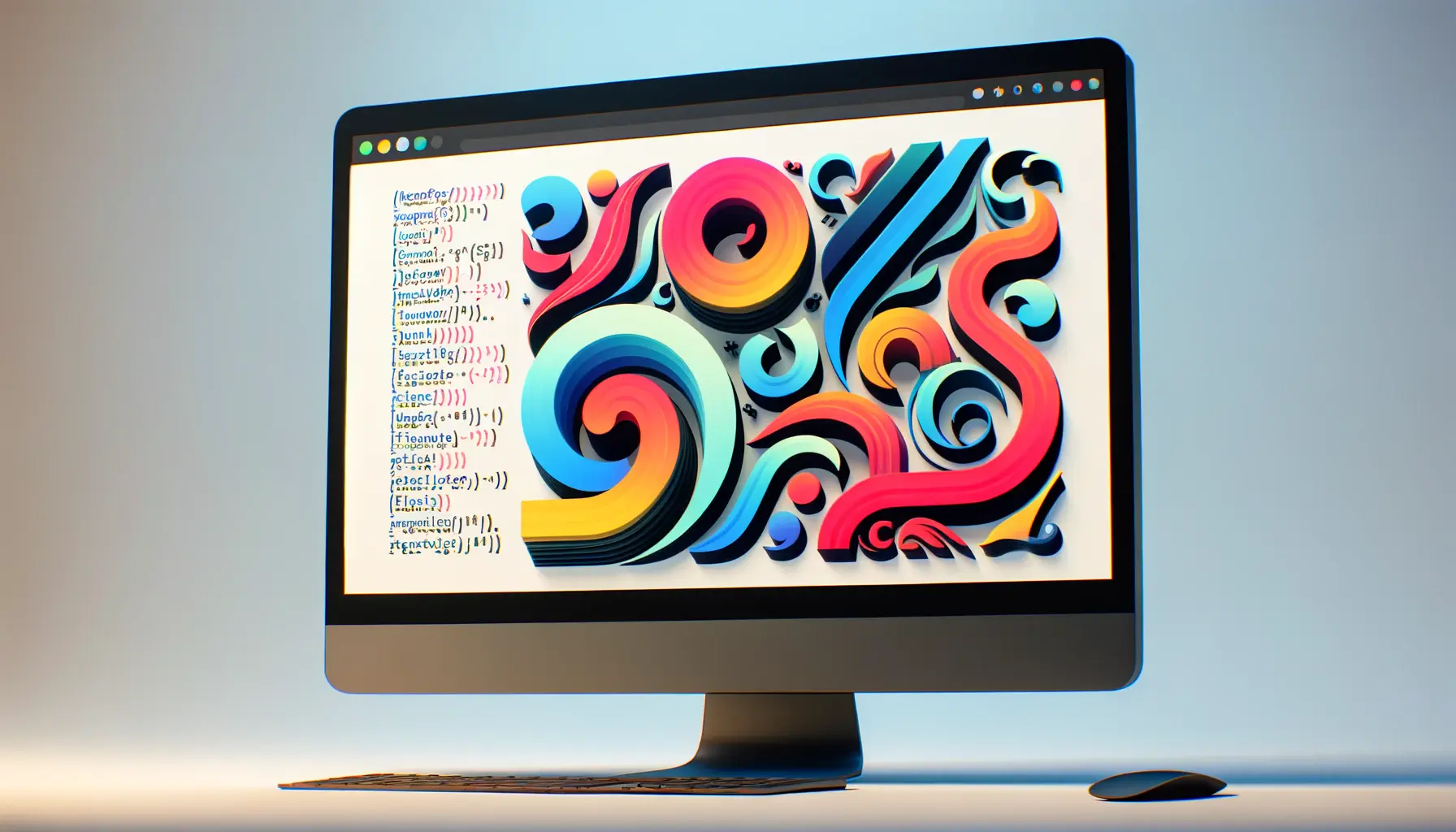The resurgence of retro typography in web design is more than just a fleeting trend; it’s a nod to the rich history of graphic design and a celebration of nostalgia, creativity, and differentiation in the digital age.
As we delve into the reasons behind this revival, it becomes clear that retro typography offers a unique blend of emotional connection and visual appeal, setting apart modern web designs with a touch of timeless charm.
Retro typography, characterized by its distinctive styles from the 1920s to the 1980s, brings back the bold, whimsical, and sometimes quirky fonts that once graced movie posters, product packaging, and advertisement boards.
This comeback is not merely about looking back; it’s about reinvigorating web design with personality and warmth that modern minimalism sometimes lacks.
In this exploration, we’ll uncover the multifaceted appeal of retro typography and its impact on contemporary web design.
- The Emotional Appeal of Nostalgia
- The Aesthetic Versatility of Retro Typography
- Enhancing User Experience with Retro Typography
- SEO Optimization Through Retro Typography
- Integrating Retro Typography with Modern Web Technologies
- Global Influence and Cultural Resurgence in Retro Typography
- Retro Typography in Branding and Identity
- Embracing the Past to Innovate the Future: The Role of Retro Typography in Modern Web Design
- Retro Typography in Web Design FAQs
The Emotional Appeal of Nostalgia
Connecting Through Memories
One of the most compelling reasons for the resurgence of retro typography is its ability to evoke nostalgia.
This emotional connection to the past can generate a sense of comfort and familiarity among users, making web experiences more engaging and memorable.
Retro fonts remind us of simpler times, evoking memories and emotions that resonate on a personal level.
This connection is not just about the aesthetic appeal but about creating a story that users can feel a part of.
Nostalgia, as a powerful marketing tool, leverages these emotions to create a stronger bond between brands and their audience.
By incorporating retro typography, web designers can tap into this sentiment, fostering a sense of loyalty and affection that modern typefaces might not achieve.
This approach not only enhances the user experience but also supports brand identity and storytelling.
Distinctiveness in Design
In a digital landscape crowded with sleek, clean designs, retro typography stands out.
Its unique charm and character can differentiate a website from its competitors, offering a fresh alternative to the ubiquitous sans-serif fonts that dominate the web.
This distinctiveness is crucial for brands looking to establish a memorable online presence.
By choosing retro typography, designers can break free from the constraints of modernism and inject personality and flair into their projects.
The diversity of retro typography, from the geometric shapes of Art Deco fonts to the groovy curves of the 70s, provides a vast palette for creative expression.
This variety allows designers to tailor their typographic choices to the brand’s identity, message, and target audience, ensuring that the website not only stands out but also communicates effectively.
Retro typography’s appeal lies in its ability to evoke nostalgia, create emotional connections, and offer distinctiveness in web design, making it a powerful tool for engaging users and enhancing brand identity.
The Aesthetic Versatility of Retro Typography
Retro typography is not just about bringing old styles back to life; it’s about the versatility and adaptability of these designs in modern web environments.
This versatility allows web designers to craft sites that are both reflective of a brand’s identity and resonant with its target audience.
The aesthetic appeal of retro typography lies in its ability to be both versatile and visually engaging, offering a plethora of styles to match any tone, mood, or message.
The adaptability of retro typography enables it to fit seamlessly into various design schemes, from the sophisticated elegance of Art Deco to the playful whimsy of mid-century modern.
This range of styles can enhance the visual hierarchy of a website, guiding the user’s eye through the content in a way that is both effective and aesthetically pleasing.
Incorporating Retro Typography in Modern Designs
- Combining Eras: Designers often blend retro typography with contemporary design elements, creating a fusion that is both nostalgic and forward-thinking. This approach can give a website a timeless quality, appealing to both older generations who remember the original styles and younger audiences attracted to the novelty.
- Highlighting Key Elements: Retro fonts are frequently used to highlight important information, such as headings, calls to action, or featured products. Their distinctive appearance makes them excellent tools for drawing attention and emphasizing key parts of a website.
Challenges and Considerations
While retro typography offers many benefits, its integration into modern web design is not without challenges.
Designers must carefully consider readability, especially on digital platforms where legibility is paramount.
Additionally, the choice of retro typography must align with the brand’s identity and message, ensuring that the design enhances rather than detracts from the user experience.
- Readability: Some retro fonts, especially those with intricate details or unusual shapes, may be difficult to read on smaller screens. Designers must balance aesthetic appeal with functionality, choosing fonts that are both attractive and legible across all devices.
- Brand Alignment: The selected retro typography should complement the brand’s overall aesthetic and message. A mismatch between the font style and the brand’s identity can confuse users and dilute the brand’s impact.
The successful integration of retro typography into modern web design requires a careful balance of aesthetic appeal, readability, and brand alignment.
Enhancing User Experience with Retro Typography
The resurgence of retro typography in web design is not just a stylistic choice; it plays a significant role in enhancing the overall user experience (UX).
By carefully selecting and integrating retro fonts, designers can create more engaging, intuitive, and memorable websites.
The key to leveraging retro typography effectively lies in understanding its impact on UX and applying it in ways that enrich the user’s journey on a website.
Retro typography can add a layer of emotional depth and visual interest that encourages users to spend more time exploring a site.
This emotional engagement is crucial for websites aiming to tell a story, sell a product, or convey a message.
When users feel a connection to the design, they are more likely to engage with the content, share it with others, and return in the future.
Strategies for Improving UX with Retro Typography
- User Engagement: Utilizing retro typography can significantly increase user engagement. By incorporating fonts that evoke nostalgia or capture the essence of a bygone era, designers can create a compelling narrative that users are eager to explore.
- Consistency and Cohesion: Consistent use of retro typography across a website can enhance its overall cohesion, making the user’s journey more seamless and intuitive. This consistency helps in building a strong visual identity that users can easily recognize and relate to.
- Accessibility: While retro fonts add a unique character to a website, it’s essential to ensure they don’t compromise accessibility. Designers should prioritize fonts that are legible and accessible to all users, including those with visual impairments, to create an inclusive digital environment.
Case Studies: Retro Typography in Action
Several successful websites have harnessed the power of retro typography to enhance UX.
For instance, a vintage-themed online store might use retro fonts to transport users back in time, creating a shopping experience that feels both unique and nostalgic.
Similarly, a website for a retro-themed diner could use typography from the era it represents to immerse users in its brand story, making the online experience as compelling as the physical visit.
These case studies highlight the importance of thoughtful typography selection and its impact on user engagement and brand perception.
By choosing retro fonts that align with their brand identity and audience expectations, these websites have managed to stand out in a crowded digital landscape.
Incorporating retro typography in web design can significantly enhance the user experience by creating an emotional connection, ensuring consistency, and prioritizing accessibility.
SEO Optimization Through Retro Typography
While the visual appeal and user engagement aspects of retro typography in web design are evident, its contribution to SEO (Search Engine Optimization) is often overlooked.
The strategic use of typography can indeed play a role in a website’s search engine ranking and visibility.
Incorporating retro typography, when done correctly, can enhance a site’s SEO by improving user engagement metrics, such as time on site and bounce rate, which are crucial signals to search engines.
Search engines prioritize websites that offer a great user experience, part of which is determined by how engaging and accessible the content is.
Retro typography can make headlines more eye-catching and content more appealing, encouraging visitors to stay longer and explore more pages.
This positive user behavior signals to search engines that the website is valuable, potentially boosting its rankings.
Best Practices for SEO-Friendly Typography
- Font Loading Performance: Ensure that the retro fonts used do not negatively impact the site’s loading speed. Search engines penalize slow-loading websites, so it’s crucial to optimize font files and use modern web font technologies.
- Readable and Accessible Content: While retro fonts add character, ensuring the text remains readable and accessible is vital. Text content should be easily crawlable by search engine bots, and using retro typography should not hinder the legibility of the content on various devices and screen sizes.
- Harmonious Design and Content: The use of retro typography should complement the overall design and content strategy. Consistent and thematic use of typography that aligns with the content’s tone and subject matter can contribute to a cohesive user experience, further supporting SEO efforts.
Impact on Content Strategy
Integrating retro typography into a website’s content strategy can also have SEO benefits.
For instance, using distinctive headers and subheaders with retro fonts can make content more shareable and link-worthy, leading to increased backlinks and social signals—both important SEO factors.
Moreover, creatively designed quotes or key points in retro fonts can enhance content’s visual appeal, making it more likely to be shared and referenced.
Ultimately, while retro typography alone is not a direct ranking factor, its impact on user experience and engagement metrics can indirectly influence a website’s SEO performance.
By adhering to best practices for typography in web design, it’s possible to leverage the charm and appeal of retro fonts to not only delight users but also support a site’s SEO strategy.
Retro typography can contribute to SEO optimization by improving user engagement metrics and complementing a website’s content strategy, indirectly influencing its search engine ranking.
Integrating Retro Typography with Modern Web Technologies
The fusion of retro typography with modern web technologies represents a harmonious blend of the past and the present, offering web designers a unique opportunity to craft websites that are both visually appealing and functionally advanced.
This integration is not merely about aesthetics; it’s about leveraging the latest web development capabilities to bring retro-inspired designs to life in a way that is responsive, accessible, and interactive.
Modern web technologies such as CSS3, HTML5, and JavaScript frameworks have opened up new possibilities for implementing retro typography in web design.
These technologies allow for dynamic typefaces, animated text effects, and even interactive typography, which can engage users in novel ways.
The challenge and opportunity lie in using these tools to reinterpret retro styles for the digital age, creating experiences that feel nostalgic yet fully grounded in the present.
Responsive and Scalable Typography
- Flexible Layouts: Modern CSS techniques, such as Flexbox and Grid, enable designers to create layouts that adapt seamlessly to different screen sizes, ensuring that retro typography remains legible and effective across devices.
- Scalable Vector Graphics (SVG): Using SVG for retro typographic elements allows for crisp, scalable text and graphics that maintain their quality on any display, from desktop monitors to mobile screens.
Enhancing User Interactions with Animated Typography
- CSS Animations and Transitions: Subtle animations can bring retro fonts to life, capturing users’ attention and enhancing the storytelling aspect of web design. CSS animations and transitions offer a lightweight method to add movement to typographic elements without compromising performance.
- JavaScript Libraries: For more complex animations and interactivity, JavaScript libraries such as GSAP (GreenSock Animation Platform) enable designers to create dynamic, engaging typographic experiences that react to user interactions.
Accessibility Considerations
While integrating retro typography with modern web technologies, accessibility must remain a top priority.
This means ensuring that text is not only visually appealing but also readable by all users, including those with disabilities.
Techniques such as proper contrast ratios, text alternatives for decorative fonts, and semantic HTML markup are essential for making retro-styled websites accessible to everyone.
The integration of retro typography and modern web technologies offers a rich canvas for creativity and innovation in web design.
By embracing the best of both worlds, designers can create websites that stand out for their aesthetic appeal and are celebrated for their functionality and accessibility.
This approach not only pays homage to the design styles of the past but also pushes the boundaries of what is possible in the digital realm.
The successful integration of retro typography with modern web technologies enhances web design through responsive, scalable, and interactive typographic experiences that are accessible to all users.
Global Influence and Cultural Resurgence in Retro Typography
The global resurgence of retro typography in web design is not just a testament to its timeless appeal but also highlights the cultural shifts and global influences that shape design trends.
This resurgence is fueled by a collective yearning for simpler times and a celebration of cultural heritage, allowing designers to explore and integrate diverse typographic traditions from around the world into their projects.
The influence of retro typography transcends borders, bringing a rich tapestry of design history to the forefront of the digital age.
As web design becomes increasingly globalized, the incorporation of retro typography offers a way to infuse designs with cultural depth and historical context.
This not only enriches the user experience but also fosters a greater appreciation for the diversity of design heritage.
By drawing inspiration from different eras and cultures, designers can create more inclusive and resonant web experiences that appeal to a broad audience.
Exploring Diverse Typographic Traditions
- Art Deco and Bauhaus: The geometric shapes and bold lines of Art Deco, combined with the functional simplicity of Bauhaus, have seen a revival in web design, offering a sleek yet nostalgic aesthetic that resonates with contemporary audiences.
- Mid-Century Modern: Characterized by its organic shapes and playful typography, the mid-century modern style brings a sense of warmth and optimism to web designs, reflecting the post-war era’s spirit of innovation and growth.
Cultural Narratives and Storytelling
Integrating retro typography from various cultures and eras allows designers to weave rich narratives and storytelling elements into their web designs.
This approach not only captivates users but also educates them about the historical and cultural significance of different typographic styles.
By celebrating these diverse influences, web design can become a powerful medium for cultural expression and exchange.
The global influence and cultural resurgence of retro typography in web design underscore the importance of looking back to move forward.
As designers continue to explore and reinterpret historical styles, they contribute to a dynamic and evolving design landscape that honors the past while embracing the future.
This ongoing dialogue between tradition and innovation ensures that retro typography will remain a vibrant and influential force in web design for years to come.
The global resurgence of retro typography enriches web design with cultural depth and historical context, fostering a greater appreciation for the diversity of design heritage and promoting cultural exchange.
Retro Typography in Branding and Identity
The strategic use of retro typography in branding and identity design plays a pivotal role in how a brand communicates its values, essence, and personality to its audience.
In an era where brands are vying for attention in a saturated digital landscape, the choice of typography can significantly impact a brand’s ability to stand out and connect with its target demographic.
Retro typography, with its inherent charm and historical significance, offers brands a unique opportunity to differentiate themselves and forge a memorable identity.
By incorporating retro typography into their visual identity, brands can evoke nostalgia, convey authenticity, and establish a timeless appeal.
This approach not only appeals to consumers’ emotions but also reinforces the brand’s narrative, making it more relatable and engaging.
The key to successful branding with retro typography lies in selecting styles that align with the brand’s core values and message, ensuring a cohesive and resonant brand experience.
Creating a Timeless Brand Identity
- Authenticity: Retro typography can lend an air of authenticity to a brand, suggesting a rich heritage and enduring values. This can be particularly effective for brands with a long history or those aiming to project a classic, trustworthy image.
- Differentiation: In a market flooded with similar products and services, a distinctive typographic style can help a brand stand out. Retro fonts can provide this differentiation, offering a visual cue that sets the brand apart from its competitors.
Emotional Connection and Consumer Loyalty
- Nostalgic Appeal: Leveraging the nostalgic appeal of retro typography can foster an emotional connection with the audience, particularly among demographics that have lived through the era the typography evokes. This connection can translate into increased brand loyalty and consumer engagement.
- Storytelling: Retro typography can be a powerful tool in storytelling, helping to weave a narrative around the brand that resonates with consumers. Through strategic typographic choices, brands can tell their story in a way that captivates and retains consumer interest.
The integration of retro typography in branding and identity design is not merely a stylistic decision; it’s a strategic branding move that can influence perception, engagement, and loyalty.
As brands navigate the challenges of the digital age, the thoughtful application of retro typography can help them build a strong, distinctive identity that resonates with consumers and stands the test of time.
Assuming retro typography is only about aesthetics overlooks its strategic value in branding and identity design, where it can significantly influence consumer perception and engagement.
Embracing the Past to Innovate the Future: The Role of Retro Typography in Modern Web Design
The resurgence of retro typography in web design is more than a mere nod to the past; it’s a strategic embrace of history to innovate and enrich the digital landscape of the future.
As we’ve explored the multifaceted appeal of retro typography, it’s clear that its impact extends far beyond aesthetic charm.
Retro typography serves as a bridge between eras, offering designers a toolkit to create engaging, memorable, and emotionally resonant web experiences.
The Strategic Significance of Retro Typography
Retro typography’s role in modern web design transcends visual appeal, acting as a catalyst for emotional engagement, brand differentiation, and storytelling.
Its ability to evoke nostalgia makes it a powerful tool for connecting with audiences on a deeper level, fostering a sense of familiarity and trust.
Moreover, the distinctiveness of retro styles offers brands a unique voice in a crowded digital space, enabling them to stand out and be remembered.
Future Trends and Predictions
- Increased Personalization: As web design continues to evolve, we can expect to see more personalized uses of retro typography, tailored to specific audiences and cultural contexts. This customization will enhance user engagement and brand relevance.
- Integration with Emerging Technologies: The fusion of retro typography with cutting-edge web technologies will likely grow, offering new ways to experience nostalgia through interactive and immersive web environments.
- Greater Focus on Accessibility: Designers will increasingly prioritize making retro typography accessible to all users, ensuring that the nostalgic appeal does not come at the expense of readability or usability.
In conclusion, the comeback of retro typography in web design is a testament to the enduring power of the past to inspire and shape the future.
By thoughtfully integrating retro typography into modern web projects, designers can leverage its unique qualities to enhance user experience, strengthen brand identity, and tell compelling stories.
As we look forward, it’s clear that retro typography will continue to play a significant role in the evolution of web design, reminding us that sometimes, looking back is the best way to move forward.
Quality web design is key for a great website! Check out our service page to partner with an expert web design agency.
Retro Typography in Web Design FAQs
Explore common questions about the resurgence of retro typography in modern web design.
Retro typography refers to fonts and typefaces popular in the mid-20th century, now rediscovered for their nostalgic appeal and distinctiveness in design.
Its resurgence is driven by nostalgia, a desire for uniqueness in design, and the emotional connection it establishes with users.
Retro fonts add character, evoke nostalgia, and help brands stand out by creating memorable and engaging online experiences.
Yes, by infusing a sense of nostalgia and distinctiveness, retro typography can significantly enhance brand recognition.
While versatile, its use should align with the brand’s identity and message to ensure coherence and effectiveness in communication.
It can increase engagement and time spent on the site by creating a visually appealing and emotionally resonant user experience.
Challenges include ensuring readability across devices and aligning the font style with the brand’s overall aesthetic and message.
By balancing aesthetic appeal with functionality, choosing legible fonts, and maintaining brand consistency across all digital platforms.
